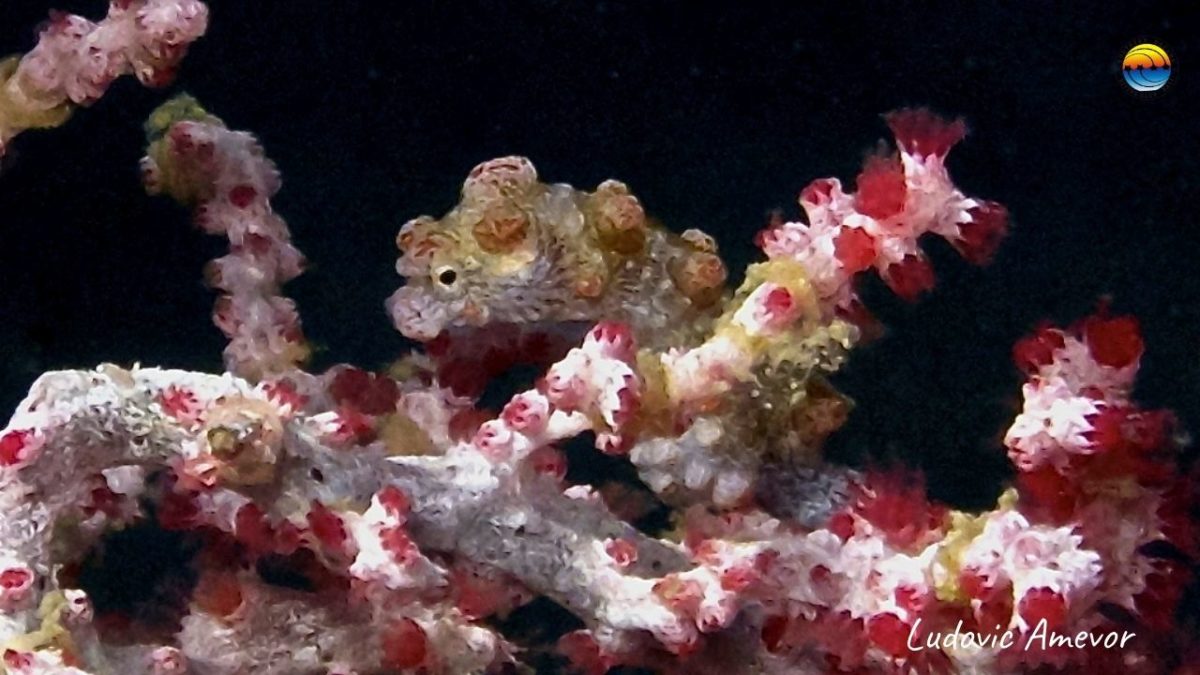Scuba diving in Bali with pygmy seahorse.
Pygmy seahorse. 10 Fun facts
1.The pygmy seahorse is the smallest species of seahorse in the world
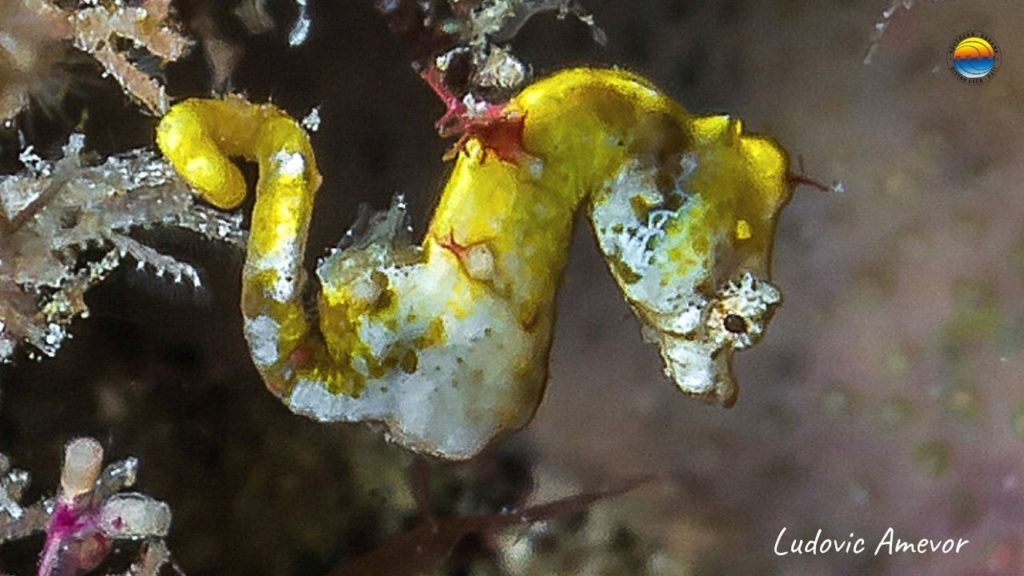
2. The first pygmy seahorse was not found in the sea but in a laboratory
It happened completely by accident in 1969, in Australia. While studying gorgonian muricella, a scientist found two tiny bargibanti seahorses.
The next year, they were scientifically cataloged for the first time.
Biologists have identified seven new species since 2000. All live in the Southeast Asian Coral Triangle.
The smallest pygmy seahorse was believed to be the Satomi, with a maximum length of 1.4 cm. But in 2018, a scientist discovered the Japanese pygmy seahorse, which is only 16 mm long.
3. The pygmy seahorse is morphologically different from other species of seahorse
Apart from their extremely small size (they grow at most 2 cm), they have a single gill opening at the back of the head, unlike the rest of the hippocampus, which has two.
They also have a very thin snout compared to many other species.
4. Like the rest of seahorse, they have a prehensile tail to be able to hold onto the coral
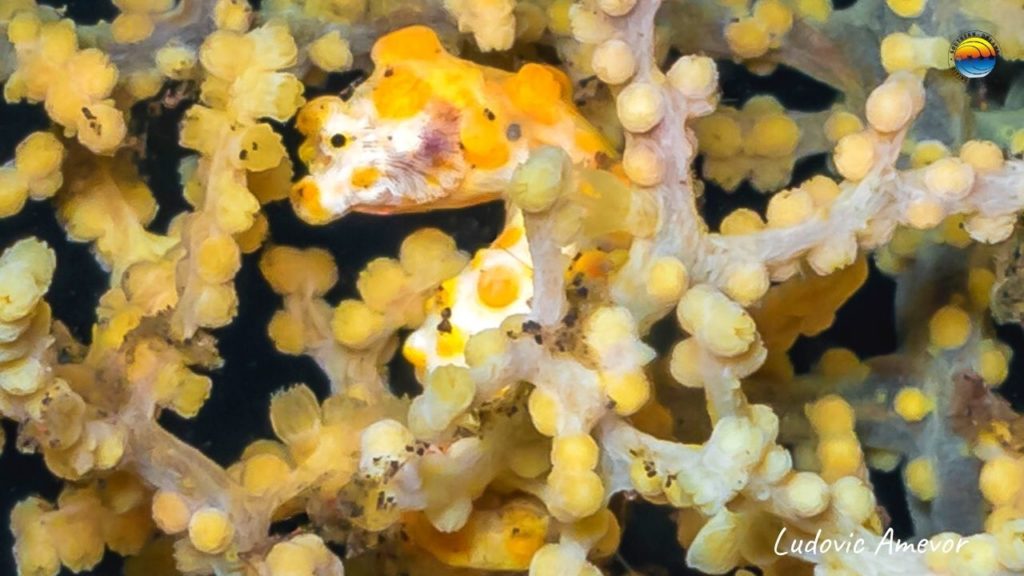
5. They don’t have teeth nor stomach. Therefore, they have to eat continuously.
Its diet is based almost exclusively on mollusks, although the first years of life also eat plankton.
6. They are mostly monogamous and it is the male that carries the eggs in his sac during pregnancy
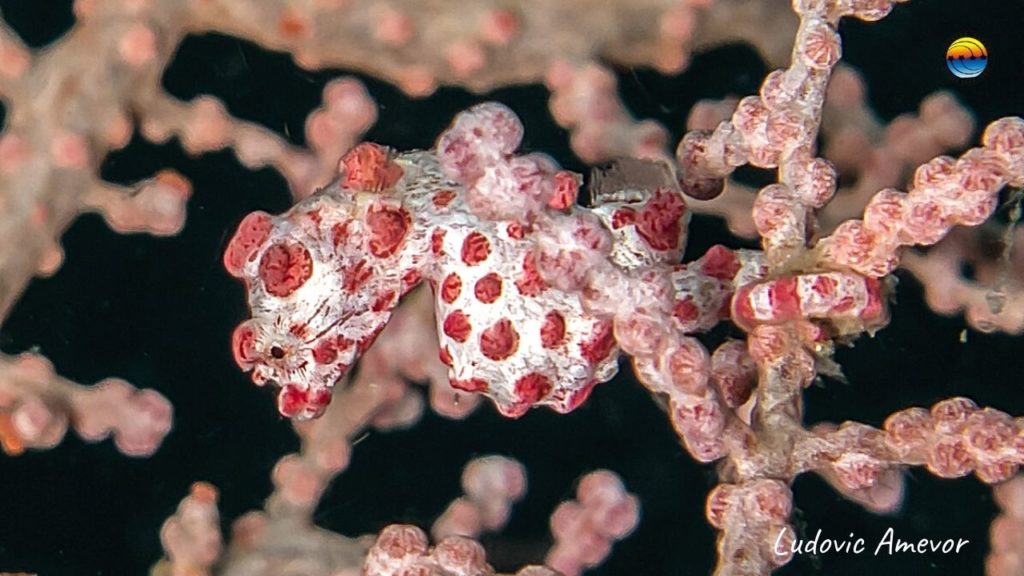
7. The habitat varies between species
They live in different sea fans, coral reefs, and walls near soft corals, in seagrass and algae.
Bargibanti and Denise live exclusively in gorgonians and never leave home, except for force majeure.
On the other hand, unlike other seahorses, pygmy seahorses live in more or less populated communities. In truth, numerous pairs of pygmy seahorses can be grouped into a single gorgonian.
Up to 28 individuals have been found sharing the same coral.
8. Pygmy seahorse is an expert in the art of camouflage
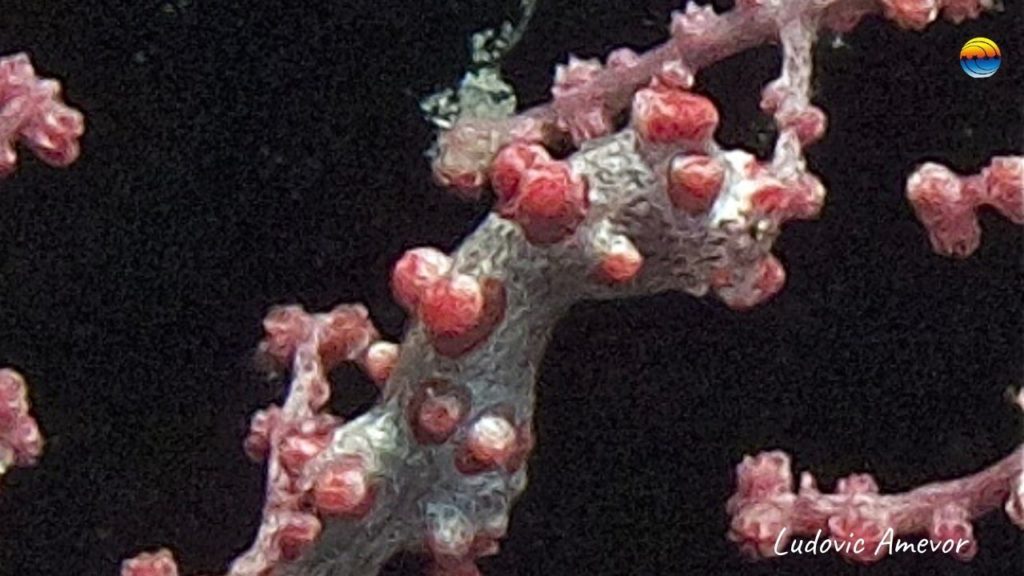
Their bodies are completely covered by tubercles that mimic the polyps of the gorgonian where they live.
They are generally yellow or orange, although they can change color to camouflage themselves with their surroundings.
Thanks to this great ability, these tiny creatures have a higher survival rate than most species of seahorses.
9. Threats

Pygmy is so small that it is challenging to study them. In fact, it is not known what its natural predators are, but it is believed that among these are the long-nosed hawkfish, crabs, and even turtles.
It is a very delicate species. In fact, seahorses are sensitive to environmental changes in water temperature and chemical quality. For this reason, humans are one of their biggest enemies.
Pygmys are so beautiful and have such bright colours that they are in high demand by aquarists.
To sum up, all seahorses are subject to different protection measures worldwide.
10. Where can we see pygmy seahorse in Bali?
The most common pygmies here are Bargibanti and Denise.
Their small size and perfect camouflage make them very difficult to find them. We are ready to take the chance! Truth is the best sites to see them are Seraya, Amed, Tulamben and Padangbai.
Be a responsible diver
Follow the code of conduct of a responsible diver. Control your buoyancy and avoid touching anything underwater. Take only photos and leave only bubbles!
Remark to underwater photographers
Pygmy seahorse does not have eyelids. Hence they are extremely sensitive to light. Bear that in mind when you go to take photos of these little creatures and do not use flash or external lights.
👉 Get the latest news about marine life in Bali on our blog

